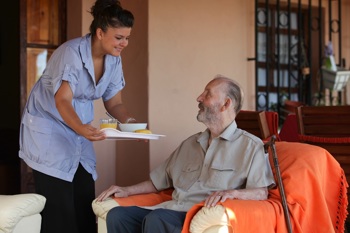
PIR Meaning
So, what is PIR? The PIR form is a comprehensive document that health and social care providers in England must submit to the CQC. It serves as a self-assessment tool, providing the CQC with detailed information about the services offered by a care provider. This information is crucial for the CQC’s inspection and monitoring processes as it ensures that care providers meet the necessary standards of care and safety.
What Does PIR Stand for?
PIR stands for Provider Information Return. This term summarises the real meaning of the form as it’s basically the return of detailed information by the care provider to the CQC. The form includes various sections that cover different aspects of a provider’s operations, such as quality of care, safety, effectiveness and responsiveness.
By completing the PIR form, health and social care providers are given the opportunity to demonstrate their commitment to transparency and continuous improvement.
Why are PIR Forms Important
A CQC PIR form is important for many reasons. Firstly, completing and submitting the PIR form is a legal requirement for health and social care services in England. Non-compliance can lead to penalties, which can affect the provider’s registration status with the CQC.
The information that a PIR form provides can help the CQC access the quality of care provided by a service. This assessment is crucial for identifying areas of improvement and ensuring that service users receive the best possible care.
Finally, the PIR form promotes transparency between health and social care providers and the CQC. It allows the CQC to have a clear understanding of the provider’s operations, which helps to build trust and accountability as a result.

CQC PIR Examples
While the specifics of a completed CQC PIR form will vary depending on the provider, certain key elements are consistent across all submissions. An example of a completed CQC PIR form from 2022 might include sections detailing patient demographics, staffing levels, incident reports and quality improvement initiatives. Such examples can serve as valuable references for providers completing their forms for the first time.
CQC PIR Form: Structure and Content
A typical CQC PIR form includes the following sections:
1. Service Details – Basic information about the provider including their name, address and type of service provided.
2. Quality of Care – Detailed descriptions of how the provider ensures high standards of care, including people’s feedback and clinical outcomes.
3. Staffing Levels – Information on the number of staff, their qualifications and training programs that are on offer.
4. Safety and Incidents – Reports on safety incidents, measures that are taken to prevent future incidents and overall safety protocols.
5. Effectiveness and Responsiveness – Information on how the provider ensures that services are effective and responsive to the needs of their service users.
CQC PIR in 2024
In 2024, CQC PIR forms have undergone significant changes to better align with the ever-changing world of health and social care, such as the new CQC assessment framework.
One of the major changes is that the PIR forms have been digitised which makes it easier to submit them online through a secure, user-friendly portal. This digital transformation facilitates real-time data entry and instant validation checks, which will reduce errors in return. They also ensure that all required fields are completed accurately.
The updated PIR forms now include more comprehensive sections that cover a wider range of metrics, including service user satisfaction scores, detailed incident analyses and advanced staff analytics. The CQC has introduced a more interactive approach, incorporating decision support tools and AI-driven insights to help providers identify potential compliance issues and areas of improvement.
Finally, the forms now allow for integration with electronic health records (EHR) systems, making it easier for care providers to pull relevant data without manual entry. This update reflects the CQC’s commitment to leveraging technology to improve transparency, accountability and overall quality of care within the health and social care sector.

Tips for Completing the CQC PIR Form
When it comes to completing the CQC PIR form, it’s worth keeping note of these CQC PIR answers and tips so you understand how to fill it out correctly.
The first step is to know the scope of the PIR form. So, the PIR form focuses exclusively on the services you provide to individuals receiving regulated activities such as personal care, and the staff involved in delivering these activities. Regulated activities are defined under Regulation 17(3) of the Health and Social Care Act 2008 (Regulated Activities) Regulations 2014. When filling out this form, you don’t need to include information about individuals or staff who are not involved in the regulated activity.
Accessing and viewing the form is simple, you will need to use the hyperlink provided in the email to access the PIR form. Make sure you have a strong internet connection and avoid opening the form on multiple devices to prevent data loss. You can save your progress and return to the form later using a unique link emailed to you.
Next, we will be looking at CQC PIR answers. To avoid submission issues, you will need to answer questions in the order presented to ensure all mandatory fields are completed. Make sure your responses are concise and clear and include examples of evidence where applicable. Here is a list of some more tips for answering the PIR form:
- When not applicable, use ‘N/A’ for text fields and ‘0’ for numeric fields.
- Free text responses are limited to 500 words and if more information is needed, an inspector will get in touch.
- Mandatory fields will be marked with an asterisk (*) so make sure these are completed to avoid any submission issues.
- Enter telephone numbers without spaces or special characters and email addresses in the correct format.
- Avoid using hyphens or special characters in free-text answers.
- Data section questions should be answered with simple responses like numbers, dates or yes/no.
- Use the survey’s ‘back’ button instead of the browser’s to avoid losing any data.
- Check for additional mandatory questions on the right side of the screen using the scroll bar.
- Do not attach documents to the PIR form; additional information will be requested if needed.
- Changes are saved automatically when you exit, allowing you to resume later.
Once the form has been filled in, you will need to submit it and get confirmation when that has been successful. If collaborating with colleagues, ensure only one form is submitted to avoid duplicates. After clicking ‘Submit,’ you will see a confirmation message and receive an email with a unique reference number. Check your spam or junk mail folder if you don’t receive the confirmation email to your inbox.
After the form has been submitted and confirmed, expect an email that summarises your PIR form responses. If you don’t receive this, you will need to contact CQC via [email protected]. To avoid losing any entered information, you must submit the PIR before the deadline. Post-submission, the CQC may reach out for additional information or clarification. However, if you follow these tips, it will help ensure that your PIR form is completed accurately and efficiently, helping to maintain compliance with CQC standards.

How The Access Group Can Help
To summarise, the CQC PIR form is a critical tool for health and social care providers in England. It helps demonstrate their commitment to high-quality care and regulatory compliance. Understanding what PIR stands for and why it’s so important is essential for any care provider looking to maintain or improve their CQC rating and services.
At the Access group, we are committed to supporting health and social care providers through our innovative software solutions, ensuring that the process of completing a PIR form is as smooth and efficient as possible. To help care services prepare for a CQC inspection, we have created Access Care Compliance. Our software can be used to make care services more compliant and allows them to perform mock inspections that are aligned with the CQC’s new inspection framework.
Access Care Compliance also offers automated data collection, real-time analytics, customisable templates, compliance alerts and reminders, training and support, and more! Taking advantage of this platform can significantly improve the accuracy, efficiency and quality of your PIR forms, ensuring compliance with CQC regulations and enhancing the quality of care delivered.
If you would like to learn more about Access Care Compliance and what it has to offer, contact us today to get in touch with one of our experts who can answer your questions and to book a demo if requested.

 AU & NZ
AU & NZ
 SG
SG
 MY
MY
 US
US
 IE
IE

